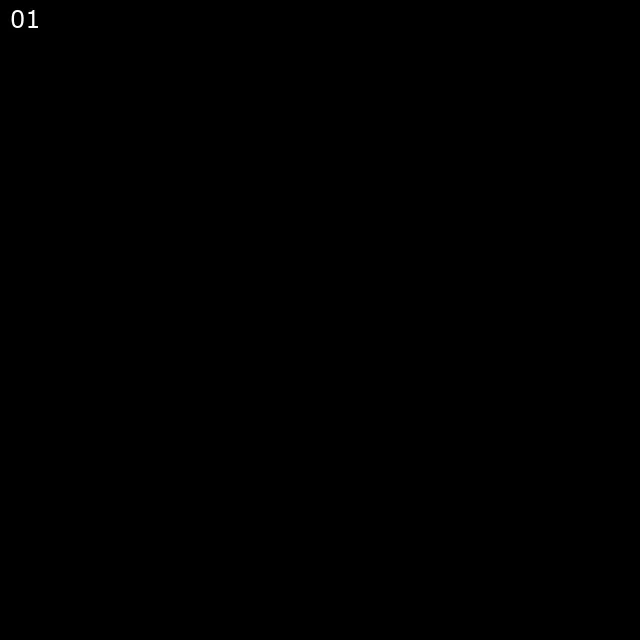
Qwen-Image は中国 Alibaba Cloud の画像生成AIである。
ここではM4 Max Mac Studio 128GBでPythonで動かす方法をメモしておく。一般には Qwen-Image-gguf を ComfyUI で動かすほうが楽のようだ。
まずPyTorchと最新のdiffusersをインストールしておく(pip install torch diffusers)。あとは、サンプルコードを適宜書き直して使う。
from diffusers import DiffusionPipeline
import torch
device = "mps"
pipe = DiffusionPipeline.from_pretrained("Qwen/Qwen-Image", torch_dtype=torch.bfloat16).to(device)
positive_magic = {
"en": ", Ultra HD, 4K, cinematic composition.", # for english prompt
"zh": ", 超清,4K,电影级构图." # for chinese prompt
}
prompt = "a Japanese anime girl" # プロンプト
image = pipe(
prompt=prompt + positive_magic["en"],
negative_prompt=" ",
width=640,
height=640,
num_inference_steps=50,
true_cfg_scale=4.0,
generator=torch.Generator(device=device).manual_seed(42),
).images[0]
image.save("example.webp", lossless=True, method=6)
保存はどんな形式でもよいが、上ではロスレスWebPとした。
640×640で3分少々かかる。1664×928なら15分くらいかかる。画像生成しているとM4 Max Mac Studioの消費電力が60Wくらい増えて、ほんのり暖かくなる。
拡散モデルの働きを理解するために、途中段階を書き出すコードをGPT-5に書いてもらった。追加部分のみ記す。
height, width = 640, 640
# --- live preview callback ---
def on_step_end(pipe, i, t, kw):
tokens = kw["latents"] # shape: [B, num_patches, 64]
with torch.no_grad():
# 1) unpack packed tokens -> VAE latent grid [B, z_dim(=16), T(=1), H, W]
lat = pipe._unpack_latents(tokens, height, width, pipe.vae_scale_factor) # private helper used by the pipeline
# 2) match VAE dtype/device
lat = lat.to(pipe.vae.dtype, non_blocking=True)
# 3) un-normalize (pipeline does this right before decoding)
mean = torch.tensor(pipe.vae.config.latents_mean, device=lat.device, dtype=lat.dtype).view(1, pipe.vae.config.z_dim, 1, 1, 1)
stdinv = 1.0 / torch.tensor(pipe.vae.config.latents_std, device=lat.device, dtype=lat.dtype).view(1, pipe.vae.config.z_dim, 1, 1, 1)
lat = lat / stdinv + mean
# 4) decode and postprocess to a PIL image
frame = pipe.vae.decode(lat, return_dict=False)[0][:, :, 0] # take temporal dim 0
pil = pipe.image_processor.postprocess(frame, output_type="pil")[0]
pil.save(f"step_{i:03d}.webp") # or display in-notebook
print(f"[preview] step {i:02d} saved")
# IMPORTANT: return the (possibly updated) tensors for the sampler to continue
return {"latents": tokens}
image = pipe(
prompt=prompt + positive_magic["en"],
negative_prompt=" ",
width=width,
height=height,
num_inference_steps=50,
true_cfg_scale=4.0,
generator=torch.Generator(device=device).manual_seed(42),
callback_on_step_end=on_step_end,
callback_on_step_end_tensor_inputs=["latents"],
).images[0]
できた50枚のWebPを結合して動画にしてみた(ffmpeg -framerate 12 -i step_%03d.webp -c:v libx264 -pix_fmt yuv420p qwen_steps.mp4)。
次は num_inference_steps を1から25まで変えた結果である。こちらはanimated WebP形式にしてみた。

最後のanimated WebPの作り方:
ffmpeg -framerate 5 -i example%03d.webp \
-vf "drawtext=: \
text='%{eif\:n+1\:d\:02}': \
x=10:y=10:fontsize=24:fontcolor=white:box=1:boxcolor=black@0.5" \
-c:v libwebp -lossless 0 -q:v 80 -loop 0 output.webp